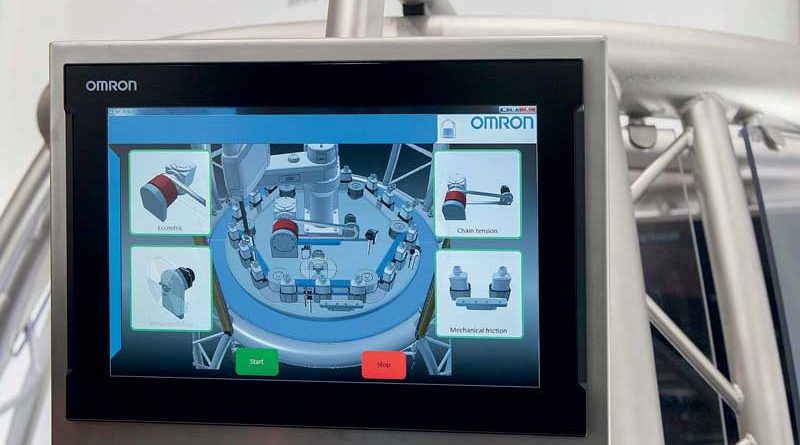More Artificial Intelligence, Less Downtimes
How can Artificial Intelligence (AI) help monitoring production process, allowing the machine to adapt its work cycle in real time in case something strange happens? Omron tried to answer such a tricky question by working together with some pilot customers and introducing at the latest trade fairs a demo of a bottle filling machine equipped with an additional AI controller. But the possible industrial applications of this technology are manifold, including the assembly lines…
by Cesare Pizzorno
The question is quite simple: how do we go about designing and integrating Artificial Intelligence (AI) that creates tangible added value in the production process? The answer provided by Omron is not so predictable: instead of laboriously searching a huge volume of data for patterns, the AI controller used by Omron features adaptive intelligence, is closer to the action and learns to distinguish normal patterns from abnormal ones for the individual machine. To sum up, the AI controller integrated in the SYSMAC platform is driven by practical requirements and aims to noticeably improve the OEE (Overall Equipment Effectiveness) by facing the greatest efficiency problems, or bottlenecks.
“Our way is to introduce the AI inside the machine, so not only to take data from the machine and then push them to the upper layer”, says Dr. Tim Foreman, Omron’s European R&D Manager, whom we met at Hannover Messe. The processes gain intelligence based on previous findings and improvements that have been made and subsequently drive holistic optimization of the entire manufacturing process.
The AI controller to oversee a bottle filling process
Both at Hannover Messe and SPS Italia, Omron exhibited an interesting demo of a bottle filling machine with a prototype of AI controller running in real time. “The bottle filling process is managed by a normal machine controller – explains Tim Foreman – as well as by an additional AI controller that gets and analyzes in real time the signals coming directly from the machine. As soon as something is detected as different from the ‘good’ pattern, that is to say from the way the machine is supposed to work, a signal is sent to the machine controller. In the demo, the reaction is not to fill the bottle in case something strange happens, so the machine skips that bottle but keeps on working without any stop or downtime. The system can monitor a few hundreds signals at the same time, translating them into a series of features. These, in machine learning, are used to recognize a pattern. It means that the machine can react to different unusual situations in many different ways”. AI might as well be used in the near future to improve not only line integration, but rather factory integration and also value chain integration, so to act on several levels.
An ongoing development process Such an AI solution introduced by Omron is currently
in the testing phase with some pilot customers who are becoming familiar with these issues. “Working together with several customers in the world is very exciting – adds Omron’s European R&D Manager – and I can say we are learning a lot from these tests. The development process is not easy and fast but we know that the results can be applied basically in every industrial sector”. And what about assembly machines and lines? Is it possible to imagine some applications in this field? “Of course, and we already have some examples”, adds Mr Foreman. “I could refer to a new assembly line in one of Omron factories in the Netherlands. There, in order to automate the production process, we tried to integrate our AI controller in the machine with the aim to monitor the signals coming out from the robot and from motion and drive components. We think that with this approach we can easily find any possible mistake, fix them and have a faster machine recovery for normal production. I can say we truly believe in human-machine collaboration also in assembly operations”.

